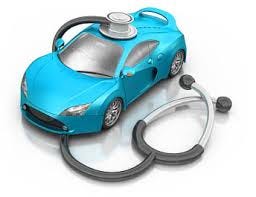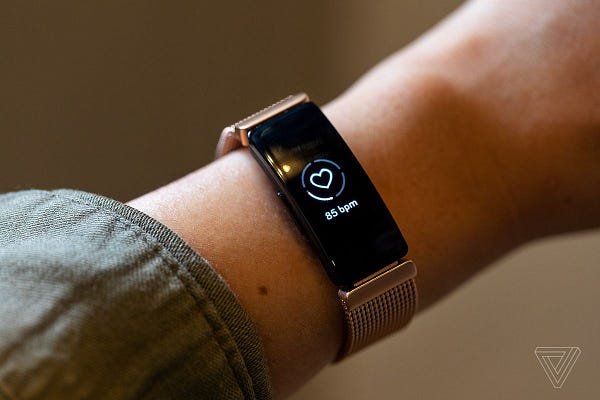The revival of spirituality amongst Millennials and Gen-Z
February 19, 2020The Brains of Beauty: are you a Skintellectual?
February 25, 2020A story by Bryan O’Rourke
The age of convenience has created a world where many of us are able to pick up a smartphone and have a meal delivered in a matter of minutes, purchase and have delivered a long list of products and services in a matter of hours, and search for data and information in a matter of seconds on any subject. Convenience is the new currency as many say and, in the decade, ahead that label or term is only going to become more relevant.
When it comes to our health and wellbeing however, there can be long gaps of time where we do not check our blood pressure, measure our weight, evaluate our heart rate, know what consumptions of calories we are undertaking, or make an effort to be physically active and mentally balanced in a healthy way. We may wait weeks or months to see a doctor if we have health issues. Furthermore, information around our health is fragmented. Those tasks and other ways of handling matters relating to our health, while improving in their availability and application, still require a lot of unnecessary effort as defined by our modern era of convenience.
The problem with how we keep ourselves healthy and fit also has significant economic consequences. Healthcare is a major cost worldwide and is estimated to account for $3 trillion in spending in the United States, and $6 trillion globally. Healthcare spending in the five major world regions will reach 8.7 trillion by 2020, up from $7 trillion in 2015. Global healthcare spending is projected to increase at an annual rate of 4.1 percent through 2021, up from just 1.3 percent in 2012 through 2016. As global populations age and increase in size, developing market expansion in advanced medical treatments, and rising labor costs will continue to drive spending growth. The way we deliver health is simply grossly inefficient.
The data sources needed, and feedback loops optimized for maintaining and improving health, and for some in how they may have to manage chronic conditions, are disorganized, not easy to understand, and certainly inconvenient. That is why in the coming decade, the age of convenience will result in embedded health as being the future of health and fitness experiences. What does that mean? To embed something is to implant (an idea or feeling) within something else so it becomes an ingrained or essential characteristic of it. When something becomes embedded it is fixed firmly and deeply in a surrounding mass. It means being healthier without having to try as hard to do so; the ultimate valuable convenience.
What we will see in embedded health and fitness experiences is the integration of sensors into many, many things in our world and the delivery of feedback and monitoring in ways that will make maintaining and improving health dramatically easier for people and in some surprising ways.
Here are just a few examples of what is emerging when it comes to the era of embedded health and fitness and what it will mean.
1. Embedded Health in Your Vehicle
Automakers, like BMW among others, are investing in efforts to expand biometric systems that will turn automobiles into health trackers. Vehicles will soon offer heart-rate monitoring, among other features, focused on the health of the driver.

After all, when you sit behind the wheel of a car, you’re already surrounded by advanced technology that is rapidly evolving and becoming more intelligent and responsive. In the next few years, cars and other vehicles are expected to offer a host of human-monitoring technologies designed to enhance the safety and wellbeing of drivers.
“The long-term hope is that we’ll have increased medical management of conditions like diabetes or high blood pressure, by using automotive technology that monitors heart rate, cardiac rhythm, blood sugar and other measurements,” according to research scientist Bryan Reimer of the Massachusetts Institute of Technology’s AgeLab, who studies the possible uses of advanced biometric technology in cars. “Accurately measuring brain waves is the Holy Grail, because that information would directly tell us much of what these other factors only indicate indirectly.”
2. Embedded Health Everywhere Via Voice Interfaces
The U.K. National Health System (NHS) published a report last year on the future of digital technologies in healthcare and speech recognition used in conjunction with voice assistants is prominently highlighted. “Preparing the healthcare workforce to deliver the digital future,” is a 100-page report commissioned by the NHS Secretary and led by U.S. geneticist Dr. Eric Topol, who is executive vice president and professor of molecular medicine at the Scripps Research Institute.
The report begins with this quote: “As people live longer, but also with more long-term conditions, there is an inexorable increase in the demand for healthcare”.
When we think about voice technology for healthcare two aspects should be considered. The first provides assistance to clinicians offering access to more information, faster and allowing more focus on the patient. Other use cases enable hands-free applications during surgery, for example. The other path is direct interaction in the home or wherever an individual may be as a “virtual medical coach” that can help patients manage diabetes, depression, and other chronic conditions. Companies like Black & Decker Healthcare, LifePod, and Orbita are today focused on offering health solutions that leverage general purpose voice assistants like Amazon Alexa.

In the realm of fitness, preventative health, meditation, and other primary prevention activities, the collection of data from sensors on people will enable these health coaches to proactively use voice to interact with people, provide guidance, offer solutions, and intervene when necessary.
The Apple Watch and its built in EKG capabilities, heart rate monitoring, and fitness and nutrition tracking are early examples of how embedded health via voice will emerge once Apple’s Siri begins integrating all of your data and telling you to take more steps, or asks you to mediate while eating an apple.
3. Embedded Health By Implanting Sensors In Your Body
The ultimate aspect of embedded health will entail our embedding more technologies directly into our bodies. Implantable sensor systems are not a new concept when we think of human medical tracking devices. Their development preceded modern medical device innovation which began to surge in the 60’s, think of pacemakers. Sensors were introduced with the advent of the space race in the 40’s, monitoring and broadcasting real-time biological parameters of dogs and chimps (Gray, 1999).
As technology evolves and is further tested, future implantable sensors will show great promise for reforming and revolutionizing the health and fitness industry. Miniaturization of hardware will enable ingestibles; smart hardware and software that not only tracks and uncovers information about a person’s health but can treat it at the nano level.
An example of where this is going is Elon Musk’s Neuralink which hopes to implant the first chip in a human patient before the end of 2020. The ultimate hope is for “some sort of symbiosis with artificial intelligence,” which he said would take root “at the civilizational scale.”
There are abundant new opportunities that will emerge as we increasingly combine technology with human biology. The resulting information and learning as it pertains to the next aspect of embedded health will be fantastic.
4. Embedded Health By Applying Artificial Intelligence To All Of This Data
Artificial intelligence (AI) uses complex algorithms and software to emulate human cognition in the analysis of complicated data. Specifically, AI enables computer algorithms to approximate conclusions about people’s health and wellbeing without direct human input.
What distinguishes AI technology from traditional technologies in health, fitness, and well-being is the ability to use a lot of data from different sources, process it and provide clear output to the humans who need it. AI does this through machine learning algorithms. These algorithms can recognize patterns in data and create its own logic. How can a combination of sleeping patterns, hormones, and diet impact a person’s pre-diabetic condition? If an AI monitors millions of adults with millions of data points over time it will be able to learn and provide better coaching and direct AI to human interventions that lead individuals to better health.
The primary purpose of health and fitness related AI applications is to analyze relationships between prevention or treatment techniques and patient health outcomes. AI programs have been developed and applied to practices such as diagnosis processes, treatment protocol development, drug development, personalized medicine, and patient monitoring and care. Medical institutions such as The Mayo Clinic, Memorial Sloan Kettering Cancer Center, and National Health Service, have developed AI algorithms. Large technology companies such as IBM and Google, and startups such as Welltok and Ayasdi, have developed AI algorithms as well for healthcare.
Our age of convenience and growing applications of technologies will lead to embedded health and fitness as the key dimension of real-world solutions for people. In the process much of what we have known to be health and fitness experiences will be transformed into entirely new ways of being able to keep healthy. These four examples in this article are but a few that represent what is to come.
Convenience is the new currency and, in the decade ahead that term is only going to become more relevant when it comes to our health.
This is a story of the Futurist Club
by Science of the Time
Written by: Bryan O’Rourke

Bryan O’Rourke serves as chairman and CEO of Vedere Ventures, a private equity firm with investments in Europe, Asia, and the Americas. He is considered a thought leader in technology, health, and consumer trends and has been quoted and interviewed in periodicals like the New York Times, Wall Street Journal, Inc. Magazine, and others. He has contributed with colleagues to seven published books and has been a keynote at nearly 100 events on four continents in the past decade. Bryan serves as an advisor to a number of well respected global fitness and technology brands and sits on a number of boards of directors including the International Health Racquet and Sports Clubs Association, and The Fitness Industry Technology Council, among others. You can follow Bryan on most social networks @Bryankorourke.



